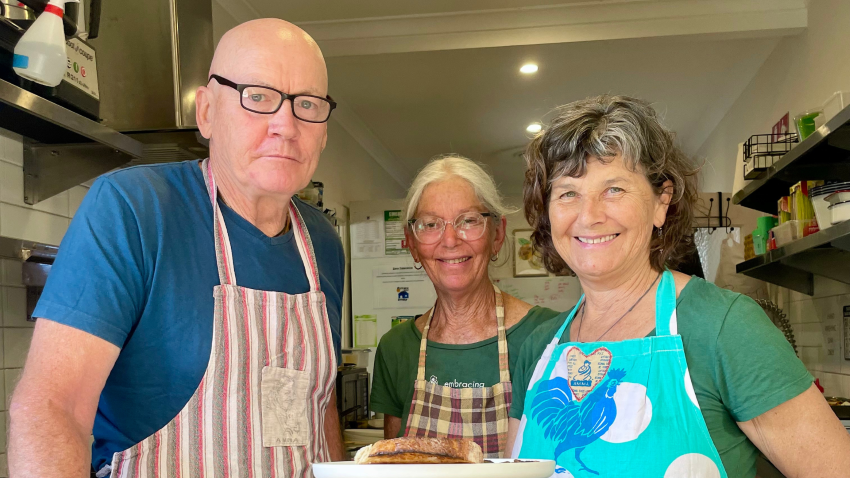A Series on Homelessness by Fletcher Street Cottage
Fletcher Street Cottage is Byron's homeless hub, providing a safe and welcoming space for individuals and families at risk of homelessness, and those already sleeping rough, to access connection and broader support.
Social housing plays a vital role in addressing homelessness and providing affordable, secure housing to those in need. In a recent inquiry, evidence highlighted the pressing need to ramp up investment in social housing as a means to alleviate homelessness and support vulnerable populations. This blog post delves into the findings of the inquiry and explores the significance of social housing in tackling homelessness.
Defining Social Housing
Before delving into the need for increased investment, it's important to understand what constitutes social housing. Social housing includes both public housing, managed by state and territory governments, and community housing, operated by community-based organisations. The term "affordable housing" is often used in conjunction with social housing, but it can refer to both social housing and housing available on the private market for lower income earners.
The Need for Investment
The inquiry revealed a recurring theme: the demand for social housing is outpacing its supply. As the population grows and homelessness remains a concern, the waiting list for social housing continues to increase. For instance, while the number of social housing dwellings has grown over time, this growth has failed to keep pace with population growth and demand. This issue is particularly evident in public housing, which has seen a significant decline over the years.
Statistics from the Australian Housing and Urban Research Institute (AHURI) indicate that there were 434,502 social housing dwellings in Australia as of June 2018. Public housing accounted for 73%, while community housing made up 20%. However, the growth in the stock of social housing has not been sufficient to meet the rising demand, leading to longer waiting lists.
Challenges and Contributing Factors
The low turnover of social housing tenancies has been identified as a contributing factor to the shortage. Tenants tend to remain in social housing for extended periods, limiting the availability of housing for those in dire need. Additionally, the decline in public housing has exacerbated the problem, leading to concerns about the quality and availability of existing social housing.
The Everybody's Home campaign spotlighted the alarming backlog of 430,000 social housing dwellings in Australia, highlighting the urgent need for intervention. The lack of sufficient funding, maintenance issues, and diverse tenant needs further complicate the situation.

Investment for a Brighter Future
Numerous organisations and experts have called for substantial government funding to address the social housing crisis. One notable advocate is the Everybody's Home campaign, which aims to bridge the identified shortfall of 500,000 social and affordable homes by 2036. The campaign proposes a combination of capital investment in new social housing properties and incentives for private sector involvement in affordable rental properties.
Prominent organisations such as Homelessness NSW, St Vincent's Health Australia, Jesuit Social Services, and Wintringham are among the supporters of this campaign. The economic benefits of investing in social housing are significant, as it not only addresses homelessness but also serves as an effective economic stimulus.
Anglicare Australia emphasises that ending the affordable housing shortage could be a powerful tool against homelessness and a boost to regional economies. Similar sentiments are echoed by the St Vincent de Paul Society, which highlights the far-reaching economic and social advantages of investing in social housing.
Public vs. Community Housing
The decline in public housing relative to population growth has been a major concern. The proportion of public housing as part of the overall housing stock has dropped over the years. This has led to deteriorating living conditions for tenants and a lack of affordable options for vulnerable individuals and families.
While community housing has grown, there are debates about its effectiveness in preventing homelessness compared to public housing. Studies suggest that public housing is the most protective factor against homelessness due to its security of tenure. This highlights the need to focus on both public and community housing to address the housing crisis effectively.
Innovative Solutions for Affordable Housing
In addition to government funding, innovative models are emerging to tackle the affordable housing challenge. Initiatives like Homes for Homes and the Permanent Rental Affordability Development Solution (PRADS) aim to raise funds for affordable housing through property transactions and partnerships with the private sector. These models not only provide financial support but also encourage collaboration between various stakeholders.
However, it's important to note that these models are not standalone solutions. They should complement government efforts to increase social housing stock and provide long-term solutions for homelessness.
Housing affordability is a key issue for Byron Shire Council and our community. Learn more about some of the housing affordability initiatives in our Shire.
The pressing issue of homelessness demands immediate action, and enhancing social housing is a critical step toward addressing this challenge. The evidence presented in the inquiry underscores the need for increased investment in social housing to bridge the growing gap between demand and supply. Advocates, experts, and organisations emphasise the economic and social benefits of such investment. Innovative solutions, combined with government funding, can pave the way for a brighter future where every individual has access to safe, secure, and affordable housing. It's a collective effort that holds the potential to transform lives and uplift communities across Australia.
Donate
Donate now to support Byron's homeless at Fletcher Street Cottage: www.giveheart.com.au





